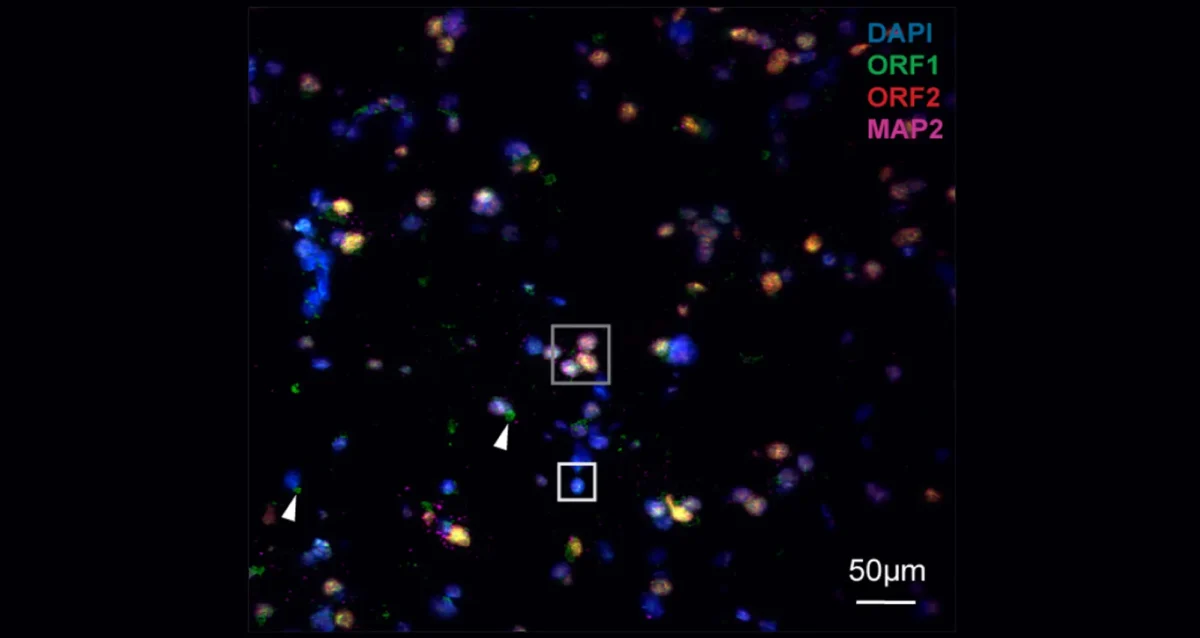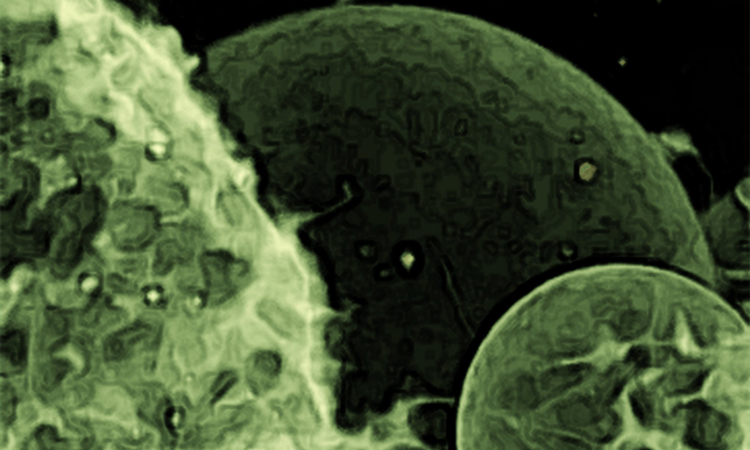Phenomena or Process: G-Protein Coupled Receptors
“I love doing science, and a chance to do some good for the world. Sanford Burnham Prebys is a great place to pursue science.“
Professor at UC San Diego and TSR
Department Head, Molecular Neuroscience, Merck Research Labs
Education
1988-1991: Postdoctoral Fellow, Whitehead Institute/MIT, laboratories of Drs. Rudolf Jaenisch and David Baltimore, Developmental and Molecular Biology
1988: MD, PhD, Stanford University School of Medicine, Neuroscience
1981: B.A., University of Hawaii at Manoa, English and Biology
Honors and Recognition
2016: Alzheimer’s San Diego Courage and Hope Award
2014: Thomson Reuters World’s Most Influential Scientific Minds list of highly cited researchers
2011: Killam Lecturer, Montreal Neurological Institute
2010: Journal of Lipid Research Lecturer, Keystone Symposium on Bioactive Lipids: Biochemistry and Diseases, Kyoto, Japan
2007: Chancellor’s Award for Excellence in Neuroscience, LSU Medical School
1999-2006: Independent Scientist Award, NIMH
1994-1999: First Award, NIMH
1993-1995: Basil O’Connor Scholar (March of Dimes Birth Defects Foundation), UCSD
1992-1995: Klingenstein Fellow in the Neurosciences, UCSD
1992-1994: Alfred P. Sloan Research Fellow, UCSD
1988-1991: Helen Hay Whitney Fellow, Whitehead Institute for Biomedical Research
1981-1988: Trainee, Medical Scientist Training Program (MSTP), Stanford University School of Medicine
Related Disease
Alzheimer’s Disease, Hydrocephalus, Multiple Sclerosis
Phenomena or Processes
Aneuploidy, Development and Differentiation, Development of Neuronal Circuits, G-Protein Coupled Receptors, Genome, Lipids, LPA, Mosaicism, S1P, Single Cell
Anatomical Systems and Sites
Brain, Nervous System
Genomic Mosaicism in the Brain
Genomic mosaicism (GM) is a surprising phenomenon whereby cells from the same brain actually have distinct genomes (different DNA sequences). We continue to define forms of GM, involved cell types, and GM’s impact on normal brain function and disease. Diseases of particular interest include Alzheimer’s disease, Down syndrome, Parkinson’s, and other neurodegenerative diseases as well as neuropsychiatric disorders and substance abuse.
Lysophospholipid Receptor Signaling
Lysophospholipids, such as lysophosphatidic acid (LPA) and sphingosine 1-phosphate (S1P) are small fat molecules that act through G protein-coupled receptors (GPCRs) on the surface of cells. We continue to study fundamental aspects of their signaling properties, and their disease roles in hydrocephalus (water on the brain), neuropsychiatric disorders (schizophrenia, autism), and neurodegenerative disorders (multiple sclerosis, Alzheimer’s disease).
Neuroscience Drug Discovery
From these and other research areas, new therapeutics for diseases of the brain are being pursued, which include identifying new targets, novel biomarkers, and mechanism-of-action studies. This approach successfully aided in the development of the first oral treatment for multiple sclerosis, fingolimod, and related lysophospholipid receptor compounds. Drug discovery efforts include not only small molecules, but also other forms of molecular therapeutics.
 Jun 4, 2025
Jun 4, 2025Novel truncated RNAs from jumping DNA encode reverse transcriptases in aging human brain
Jun 4, 2025Jerold Chun colleagues at the Institute and elsewhere have recently reported real-world links in medical records associating common HIV drugs…
 Dec 19, 2024
Dec 19, 2024Combining long- and short-read sequencing in single cells reveals new mRNAs in neurodegenerative diseases
Dec 19, 2024Scientists at Sanford Burnham Prebys uncover gene product mRNA alterations and relationships in three common diseases.
 Apr 16, 2024
Apr 16, 2024Common HIV treatments may aid Alzheimer’s disease patients
Apr 16, 2024Scientists at Sanford Burnham Prebys uncover beneficial links between certain HIV drugs and Alzheimer’s disease.
 Apr 9, 2024
Apr 9, 2024Tiny brain bubbles carry complete codes
Apr 9, 2024Scientists at Sanford Burnham Prebys demonstrated that vesicles traveling between cells in the brain carry more complete instructions for altering…
 Dec 8, 2023
Dec 8, 2023Similarity between vitamin B12 loss and multiple sclerosis revealed
Dec 8, 2023Findings identify molecular signaling pathway that could enhance current MS treatments.
 Dec 15, 2022
Dec 15, 2022Running in the family: La Jollan completes 50th consecutive Honolulu Marathon as his kids finish their first
Dec 15, 2022Dr. Jerold Chun marked a major milestone Dec. 11 in his yearly tradition to honor his father — he completed…
Dr. Blaho began her research career focused on how bioactive lipids contribute to the innate immune response against bacterial infection, characterizing roles for eicosanoids in the generation and resolution of Lyme arthritis pathology. The wild diversity of lipid species led Dr. Blaho to Weill Cornell Medical College in New York City to pursue postdoctoral training in the field of sphingolipids, particularly sphingosine 1-phosphate (S1P), and its receptors. Advancing to Instructor at Weill Cornell and later, Research Assistant Professor at Sanford Burnham Prebys, Dr. Blaho continued her research in lipid chaperones and receptor signaling, with an emphasis on cell-type differential effects on hematopoiesis and immunity in response to cell stressors. In August of 2019, Dr. Blaho joined the faculty at the Institute as an Assistant Professor in the Immunity and Pathogenesis program.
“The immune system has the power to protect us from invading pathogens and cancer or to initiate a ‘self-destruct’ sequence that consumes us with inflammation and autoimmunity. It is fascinating to me that a simple ubiquitous fat molecule like S1P can control the birth and destiny of immune cells.”
Education
2014-2016: Instructor, Weill Cornell Medicine, Pathology and Laboratory Medicine and Neuroscience
2009-2014: Post-doctoral training, Weill Cornell Medicine, Pathology and Laboratory Medicine
2007-2009: Post-doctoral training, University of Missouri, Columbia, Veterinary Pathobiology
2007: PhD, University of Missouri, Columbia, Molecular Microbiology and Immunology – BS
Funding Awards and Collaborative Grants
National Heart, Lung, and Blood Institute R01
American Heart Association Scientist Development Grant
2014-15: Leon Levy Neuroscience Foundation Grant
2015: Foundation LeDucq SphingoNet Young Investigator Grant
2009-12: National Cancer Institute Individual Ruth L. Kirschstein Post-doctoral Fellowship
Honors and Recognition
2017: British Journal of Pharmacology Lecture: FASEB Summer Research Conference on Lysophospholipids and Related Mediators–from bench to clinic.
2014: Leon Levy Foundation Neuroscience Fellow
2010: Keystone Scholarship, Bioactive Lipids: Biochemistry and Diseases
2008: Keystone Scholarship, Eicosanoids and Other Mediators of Chronic Inflammation
2007: Young Investigator Award in Inflammation, Eicosanoid Research Foundation
2004: National Academy of Sciences Christine Mirzayan Policy Fellow, Institute of Medicine Board on Health Sciences Policy
Related Disease
Biochemistry, Immune Disorders, Inflammatory/Autoimmune Disease, Leukemia/Lymphoma, Molecular Biology, Multiple Sclerosis
Phenomena or Processes
Adaptive Immunity, Apoptosis and Cell Death, Cell Signaling, G-Protein Coupled Receptors, Hematopoiesis, Inflammation, Innate Immunity
Anatomical Systems and Sites
Hematopoietic System, Immune System and Inflammation, Vasculature
Research Models
Human Adult/Somatic Stem Cells, Mouse, Mouse Somatic Stem Cells, Primary Cells
Techniques and Technologies
Cell Biology, Cellular and Molecular Imaging, Confocal Microscopy, Fluorescence Microscopy, Gene Expression, Lipid Bilayers, Mass Spectrometry
The lipid sphingosine 1 phosphate (S1P) is found in high levels in the blood and lymph and is primarily carried by the protein ApoM, found on HDL. S1P can affect the cardiovascular, nervous, and immune systems via interaction with cell surface-expressed receptors, S1P1-5. My work is determining how changing S1P carrier or receptor expression and signaling can affect cells of the immune system, particularly in the bone marrow, and how this alters their ability to respond to stress or infection.
 Dec 22, 2021
Dec 22, 2021A strange research ecosystem: Discussing Lyme disease with Victoria Blaho
Dec 22, 2021As an infectious disease immunologist studying Lyme disease, Victoria Blaho is one of a rare breed. Sanford Burnham Prebys assistant…
 Apr 22, 2021
Apr 22, 2021Victoria Blaho receives prestigious Lina M. Obeid Award
Apr 22, 2021The award honors Obeid, a pioneer in the field of sphingolipids and a fierce advocate for women in science. Victoria…